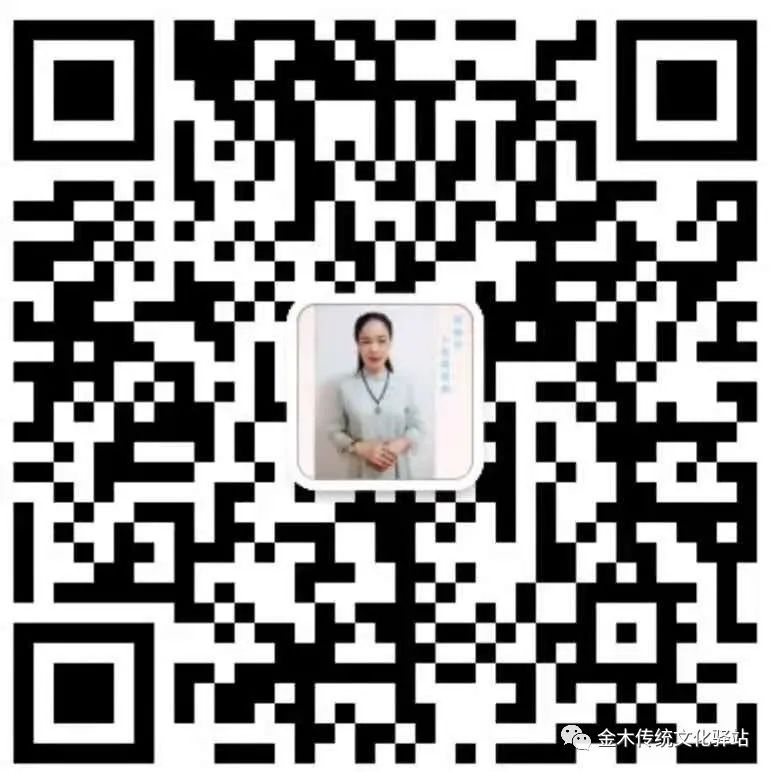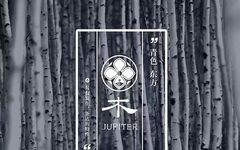The Five Elements are interrelated through generation and overcoming.
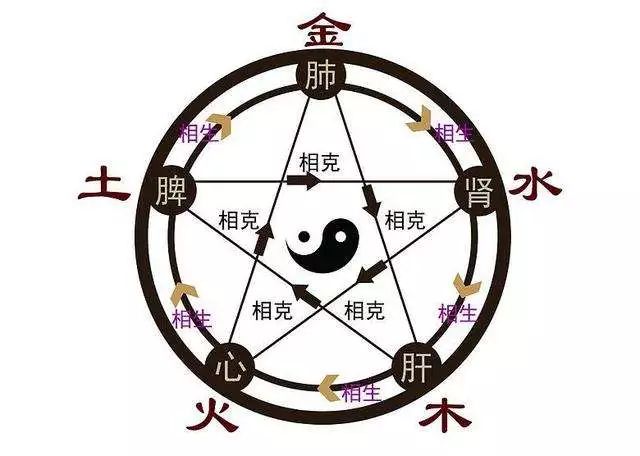
Generation: Wood generates Fire, Fire generates Earth, Earth generates Metal, Metal generates Water, Water generates Wood —- Generation represents development.
Overcoming: Wood overcomes Earth, Earth overcomes Water, Water overcomes Fire, Fire overcomes Metal, Metal overcomes Wood —- Overcoming represents balance.
In Traditional Chinese Medicine, the concepts of “Five Elements, Five Qi, Five Organs, Five Tastes, and Five Colors” are emphasized. They are interconnected, supporting and overcoming each other. The harmony of the Five Elements directly affects bodily functions; any imbalance can lead to corresponding physical symptoms. Therefore, understanding the Five Elements of the body is essential for health.
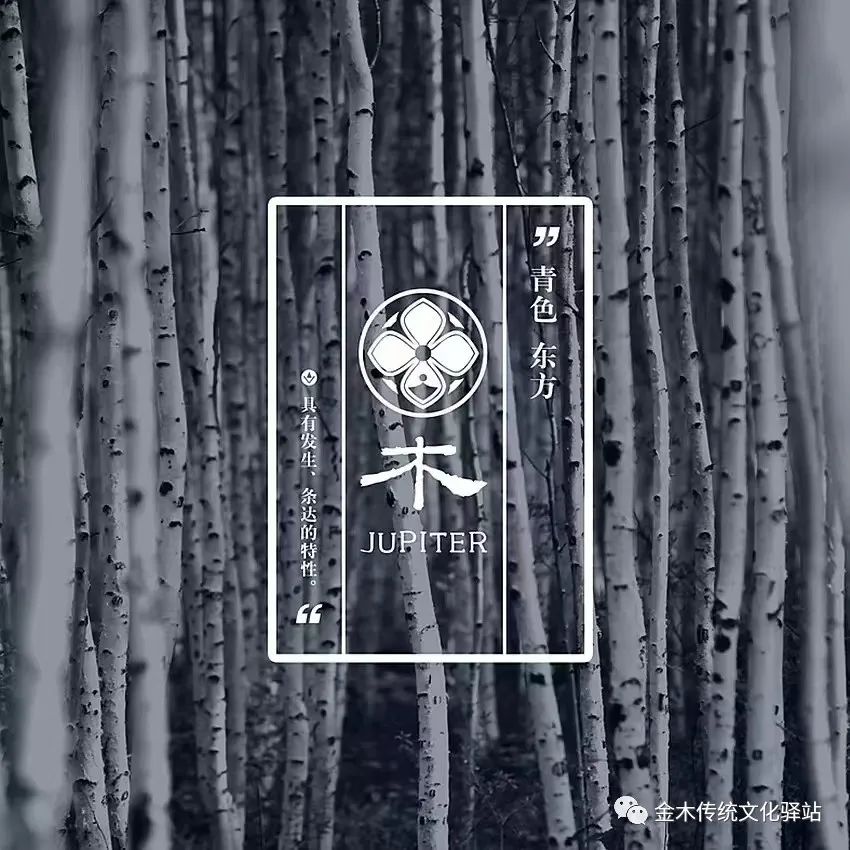
Element of Wood: Spring
Organ of Wood: Liver, Gallbladder, Eyes. When working too hard, the first organ to protect is the liver. The liver is the organ that stores blood in the body; if you work hard, it must work hard to store blood. The Five Elements are originally generated in the order of Liver → Heart → Spleen → Lung → Kidney. If the liver is overworked and weak, the Heart, Spleen, Lung, and Kidney will also be affected, and the accumulated anger from overwork can harm the liver.
Therefore, snacks during overtime work can include sour foods, such as preserved plums. If any organ associated with Wood feels uncomfortable, it is beneficial to eat more green foods associated with Wood. These foods correspond to the liver and gallbladder and are rich in chlorophyll, vitamins, and fiber, which can help the organs expel toxins from the body.
Emotion associated with Wood: Anger Taste associated with Wood: Sour Foods associated with Wood: Green foods Recommended foods: Cabbage, lettuce, and spinach.
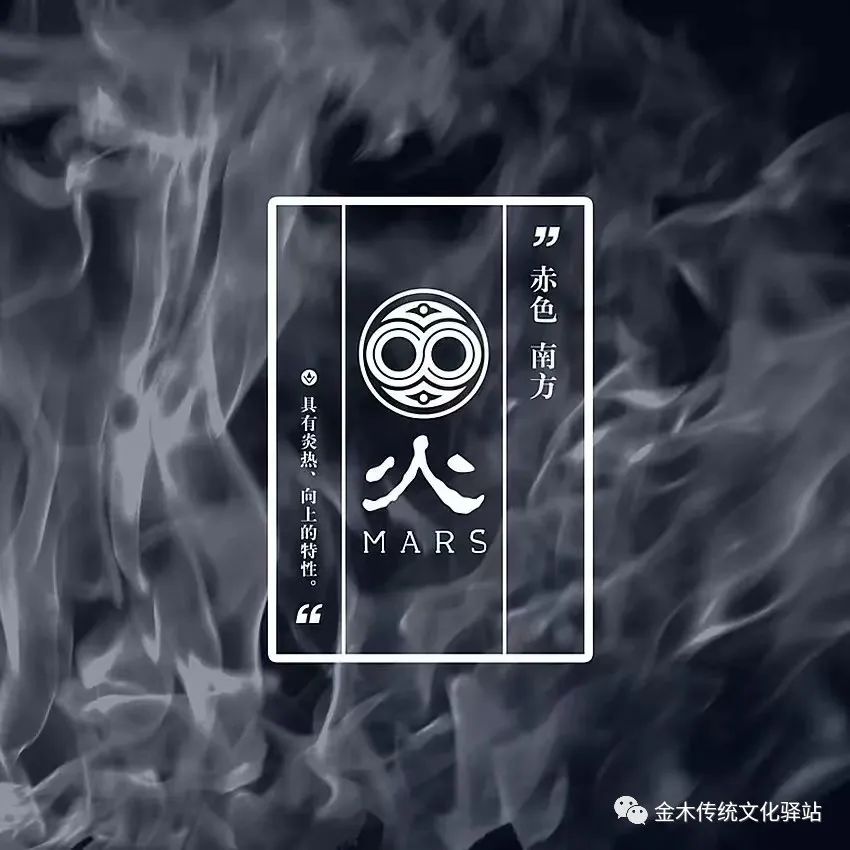
Element of Fire: Summer. Organ of Fire: Heart, Small Intestine, Tongue Emotion associated with Fire: Joy Taste associated with Fire: Bitter
Foods associated with Fire: Red foods. The heart belongs to Fire, and during this time, it is easy to become overheated, leading to restlessness and increased heart rate, which adds burden to the heart. Therefore, it is crucial to nourish the heart in summer. In addition to eating heart-nourishing foods, according to the principle of overcoming in the Five Elements, the Kidney overcomes Heart Fire, so nourishing Kidney Qi in winter is a wise approach.
To nourish the heart, it is best to eat red foods, which correspond to the red blood and the heart responsible for blood circulation. Those with poor complexion and cold extremities can benefit from eating more.
Recommended foods: Red beans, red dates, carrots, red peppers, tomatoes.
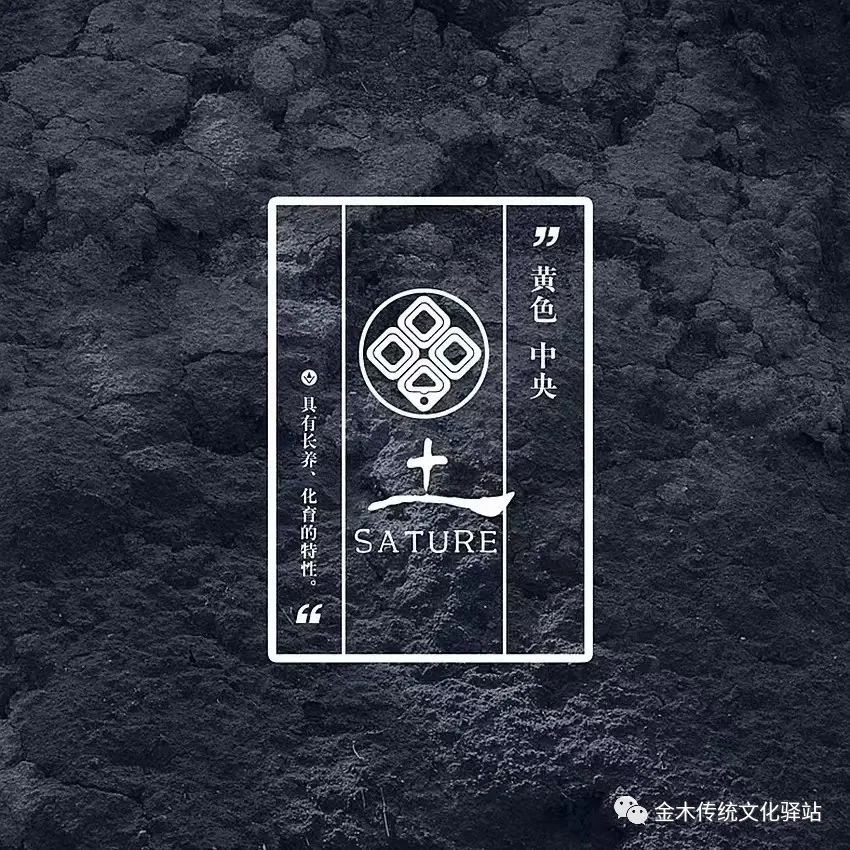
Element of Earth: Late Summer. This refers to the period in summer when the dry heat has passed and it begins to rain. Organ of Earth: Spleen, Stomach, Mouth Emotion associated with Earth: Worry Taste associated with Earth: Sweet
Foods associated with Earth: Yellow foods. Late summer is the wettest time of the year. Excessive dampness can harm the Spleen and Stomach, and when these organs are affected, appetite decreases, which is why we often lack appetite in the summer. During this time, it is important to eat more sweet and bitter foods; sweet foods can replenish Spleen Qi, and according to the Five Elements, the Fire of the Heart nourishes the Earth of the Spleen, so eating bitter foods that strengthen the heart also benefits the Spleen.
If there are issues with the Earth organs, yellow foods correspond to them. The Spleen and Stomach play the role of nutrient providers in the body; when they are well-regulated, Qi and blood will be abundant.
Recommended foods: Oranges, pumpkins, corn, yellow soybeans, sweet potatoes.

Element of Metal: Autumn. The most important organ to nourish in autumn is the Lung, and the most common ailment is coughing, which is influenced by the spirit in the Five Elements. In autumn, plants begin to wither, which can easily lead to feelings of melancholy. Organ of Metal: Lung, Large Intestine, Nose Emotion associated with Metal: Sadness. Sadness belongs to Metal and is related to the Lung; excessive sadness can damage the Lung.
Taste associated with Metal: Spicy
Foods associated with Metal: White foods. Foods of the Metal category mainly correspond to the lungs and are mostly white foods. They are generally neutral and cool, can strengthen the lungs and promote digestion, enhance metabolism, and give skin elasticity and luster.
Recommended foods: Pears, white radishes, yams, almonds, lilies, white fungus.
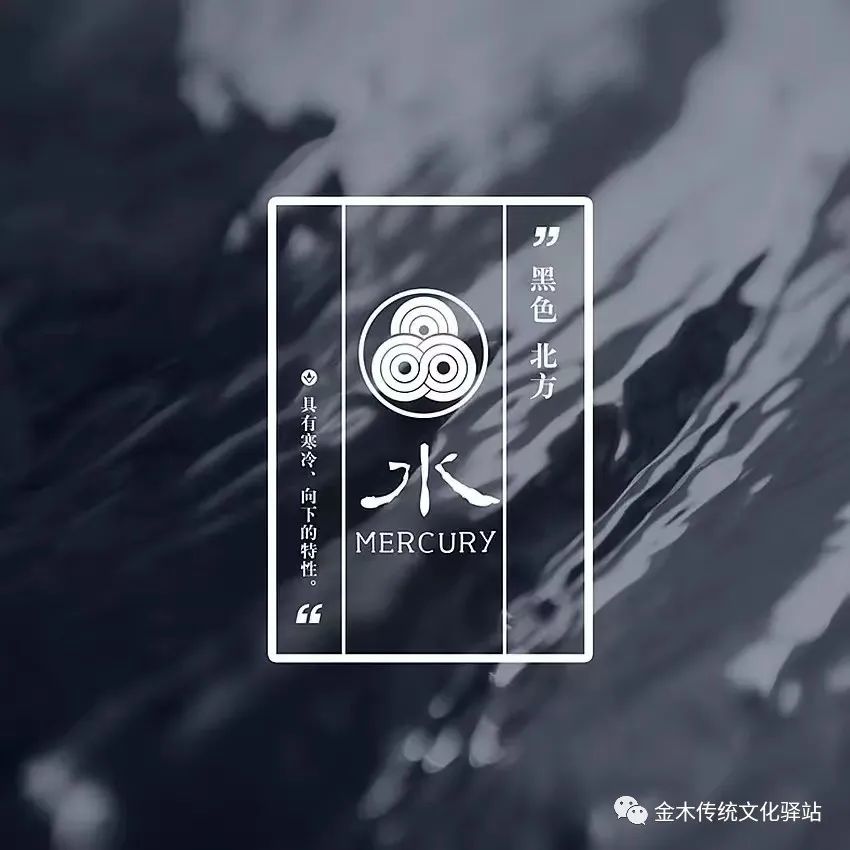
Element of Water: Winter
Organ of Water: Kidney, Bladder, Ear. Excessive eating out can harm the kidneys, which are the organs we care about most. Chefs often use a lot of oil and salt in cooking, which makes food more flavorful. However, salty taste belongs to Water and is beneficial in moderation; excessive salt can be detrimental, especially if the complexion is dark, indicating potential kidney issues.
Emotion associated with Water: Fear Taste associated with Water: Salty
Foods associated with Water: Black foods. These foods correspond to the kidneys and bones, and regularly consuming them can help maintain normal metabolism related to the kidneys, bladder, and bones, preventing excess water retention that can cause edema and strengthening the bones.
Recommended foods: Black beans, black sesame, blueberries, mushrooms, black dates, longan, and dried plums.
In simple terms, the Five Elements are:
Five Elements: Fire, Wood, Earth, Metal, Water
Five Organs: Heart, Liver, Spleen, Lung, Kidney
Five Bowels: Small Intestine, Gallbladder, Stomach, Large Intestine, Bladder
Five Senses: Tongue, Eyes, Mouth, Nose, Ears
Five Features: Face, Nails, Lips, Skin, Hair
Five Tastes: Bitter, Sour, Sweet, Spicy, Salty
Five Colors: Red, Green, Yellow, White, Black
Five Emotions: Joy, Anger, Worry, Sadness, Fear
Five Fluids: Sweat, Tears, Saliva, Mucus, Spit
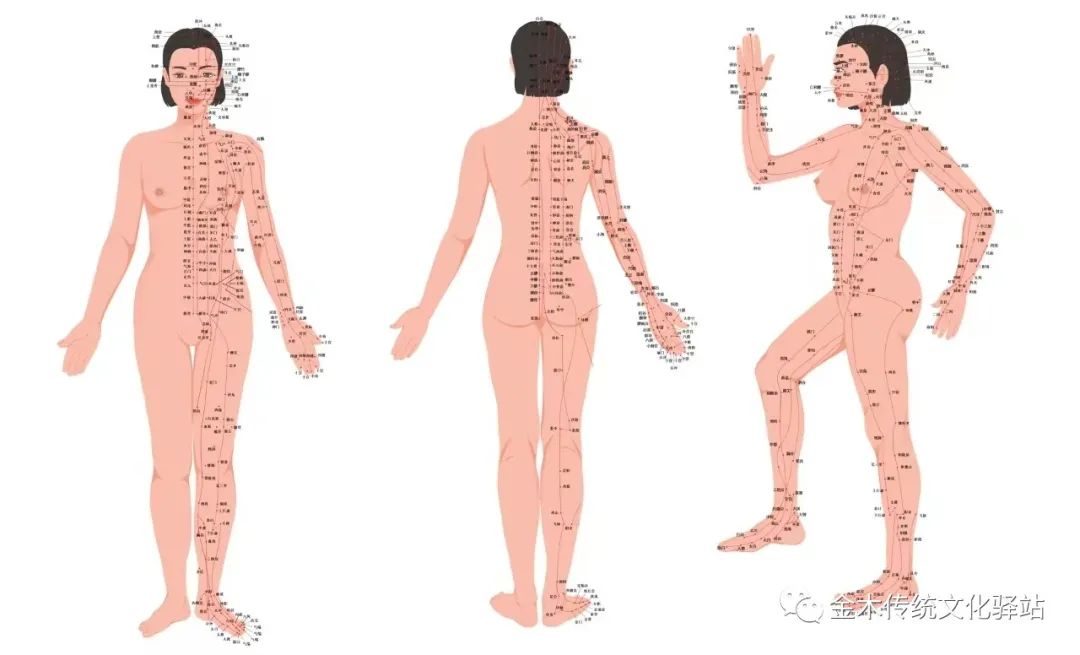
1. The Five Organs and Five Bowels
In traditional culture, the Liver corresponds to the Gallbladder, hence the term “the Liver and Gallbladder reflect each other.” When the Gallbladder Qi rises, the Liver Qi can also rise.
The Heart corresponds to the Small Intestine. In daily life, from 11 AM to 1 PM is the time of the Heart, but the Heart is not affected by evil, so the Small Intestine may bear the brunt. If there are absorption issues, it can lead to Small Intestine diseases. When the Small Intestine is in its prime, if a person experiences blushing, palpitations, or chest tightness, it indicates a problem in the relationship between the Heart and Small Intestine, which is a precursor to heart issues.
The Spleen corresponds to the Stomach, and they are in a mutual relationship; if the Spleen is weak, the Stomach will also be weak, and vice versa.
The Lung and Large Intestine are interrelated; when a person needs to defecate, it is the Lung Qi that helps expel the stool. Some skin symptoms are also related to the Large Intestine; in some cases, TCM may not directly treat the Lung meridian but may directly address the Large Intestine meridian to resolve issues.
The Kidney and Bladder are interrelated. The Bladder’s Qi transformation function depends on the Kidney Qi’s strength; sufficient Kidney Qi is necessary for the Bladder to function properly in storing and expelling urine.
The profound secrets of the Five Colors, Five Tastes, and Five Elements in dietary health!!! It is said that Bian Que had the ability to see through the Five Organs and Six Bowels; how did he achieve this?
This is closely related to the Five Colors, Five Tastes, and Five Elements in dietary health. If you cannot apply these concepts, your ailments will manifest on your face, and he can naturally see where you are unwell. The so-called “seeing through” only indicates his deep understanding of the Five Colors, Five Tastes, and Five Elements in dietary health! Enough said, let’s move on!
The Five Grains: Here refers to japonica rice, adzuki beans, wheat, soybeans, and yellow millet.
The Five Fruits: Here refers to peaches, plums, apricots, chestnuts, and dates. Peaches are beneficial for Qi and blood, and for generating body fluids, making them ideal nourishing fruits.
The Five Livestock: Here refers to cattle, sheep, pigs, dogs, and chickens. Beef is known to replenish Qi and strengthen the body, as the saying goes, “Beef replenishes Qi, equal to Huang Xiang.”
The Five Vegetables: Here refers to sunflower, mint, garlic, scallions, and leeks, indicating that vegetables have the role of nourishing the body.
Different foods contain different nutrients; only by achieving a reasonable combination of various foods can the body obtain a variety of nutrients.
2. The Five Colors and Dietary Health
The color of food corresponds to the Five Organs, and a reasonable combination is the foundation of dietary health. From the perspective of TCM, green enters the Liver, red enters the Heart, yellow enters the Spleen, white enters the Lung, and black enters the Kidney.
The color of the Heart is red, corresponding to summer, so red foods nourish the heart and invigorate blood, and also have the effect of promoting blood circulation. Especially in summer, it is crucial to nourish the heart, so it is advisable to eat more red foods such as hawthorn (red fruit), tomatoes, red apples, red peaches, red radishes, and red peppers.
The color of the Kidney is black, corresponding to winter, so black foods are beneficial for kidney anti-aging. Especially in winter, it is essential to nourish the kidneys. Therefore, in winter, it is advisable to eat more black mulberries, black sesame, black rice, black beans, He Shou Wu, and cooked Rehmannia.
The color of the Lung is white, corresponding to autumn, so white foods have a nourishing effect on the lungs. Therefore, in autumn, it is advisable to eat more ginkgo, white pears, white peaches, white almonds, lilies, and pear syrup.
The color of the Spleen is yellow, which nourishes throughout the year, so yellow foods are beneficial for the Spleen. Especially in late summer and the last 18 days of each season, it is advisable to eat more yam, sweet potatoes, yellow millet, and corn.
The color of the Liver is green, represented by green, so green foods are beneficial for the Liver. Especially in spring, it is advisable to eat more green bamboo shoots, green vegetables, green beans, and spinach.
3. The Five Tastes and Dietary Health
Excessively sour taste: Sour taste nourishes the Liver, but excessive sourness can harm the Liver, leading to excessive Liver Qi, which can overcome the Spleen and Stomach (Wood overcomes Earth), resulting in digestive dysfunction.
Excessively alkaline taste: Alkaline taste nourishes the Kidney, but excessive alkalinity can harm the Kidney, damaging the bones (the Kidney governs bones and produces marrow). Excessive Kidney Qi can lead to suppressed Heart Qi (Water overcomes Fire), causing palpitations and shortness of breath.
Excessively sweet taste: Sweet taste nourishes the Spleen, but excessive sweetness can harm the Spleen, causing stomach bloating and discomfort, and can also overcome Kidney Water (Earth overcomes Water), leading to a dark complexion.
Excessively bitter taste: Bitter taste nourishes the Heart, but excessive bitterness can harm the Heart, leading to heart and lung dysfunction (Fire overcomes Metal).
Excessively spicy taste: Spicy taste nourishes the Lung, but excessive spiciness can harm the Lung, leading to sluggishness in the tendons (Metal overcomes Wood; the Liver belongs to Wood and governs the tendons). Since the Lung governs Qi, harming Qi can lead to mental weakness.
4. The Mysteries Between Humans and the Five Elements
The earth has five directions, humans have five elements, and food has five tastes… How can we grasp the different dietary codes of the Five Elements to adjust health and fortune for different types of people? Chu Qi will introduce the external characteristics of the five types of people corresponding to Metal, Wood, Water, Fire, and Earth, along with the dietary adjustments for each type in the following five issues.
Wood Type Person – Kind and Righteous
External characteristics: Relatively thin, some are tall and slender, while others are petite and delicate, appearing slim and upright, with a longer waist and less flesh on the back. Wood type people have long faces and a greenish complexion.
What do Wood type people like to eat? (Wood), (Water) foods. Wood type people enjoy sour foods, such as green plums, and prefer vegetables, showing little interest in fatty meats. They like to drink tea, especially flower tea (as flower tea contains the most Wood element).
(Water) They enjoy vegetable soup, fish, and jellyfish, favoring salty flavors. Wood type people prefer salty flavors over sweet ones.
What should Wood type people eat for health and wellness?
To enhance fortune: (Wood is strong, Earth is weak) they should supplement with Earth foods to improve fortune: (Earth) eat more meat, such as beef, pumpkin, desserts, yellow soybeans, etc.
For health: (Wood is strong, Fire is weak) they should supplement with Fire to balance the Wood type’s greenish complexion and poor circulation, and should consume warming foods: red apples, red dates, pig heart, etc.
Metal Type Person – Delicate, Authoritative, and Respected
External characteristics: Large frame, solid muscles, high and wide forehead, fair skin, large nose, and a square appearance. They speak with a loud and clear voice, and may have sparse or dull hair. Metal type people enjoy (Earth) and (Metal) foods. (Earth) They prefer sweet foods, such as meat, eight-treasure porridge, peanuts, etc. (Metal) They enjoy bean products, ginger, scallions, chicken, etc.
What should Metal type people eat to enhance fortune? They should supplement with (Wood) foods: Metal is strong and overcomes Wood, so they should balance by supplementing with Wood: (Wood) papaya, green tea, or lemon, etc. They should also supplement with (Water) foods: Metal is dry and needs moisture. (Water) Snow pears, salted fish, chicken kidneys, pig ears, etc.
Water Type Person – Intelligent, Articulate
Water type people have two external characteristics: 1. Slim Water Type: Dark skin on the face and body, long and slender body, small and deep-set eyes, strong bone structure, and solid muscles. 2. Fat Water Type: Short and stout, with short, round hands and feet, large belly, buttocks, and ears, with more flesh and less bone, and generally more active than slim Water types, while fat Water types tend to enjoy life more.
What do Water type people like to eat? (Water) and (Metal) foods. (Water) They enjoy marinated platters, seafood, especially shellfish, and prefer salty flavors. (Metal) They like pastries, corn, garlic, ginger, and chicken feet, and enjoy soup and spicy food.
What should Water type people eat for health? (Fire) and (Wood) foods. To enhance fortune: (Water is strong, Fire is weak, they should supplement with Fire to balance): dog meat, lamb, hawthorn, duck tongue, tomatoes, watermelon. For health: (Water is strong, Wood is weak) they should protect the Liver and Kidney: vegetables, green plum wine, fish heads.
Fire Type Person – Courteous, Active, and Proactive
External characteristics: Round and large eyes, sparse beard, red nose, flushed complexion, solid muscles, and prominent bones. Fire type people usually have a pointed head, a rosy complexion, a lively spirit, a slender figure, and move quickly.
What should Fire type people eat to enhance fortune? They should eat more Water foods. Fire is strong and Water is weak, so they should supplement with Water to balance their fortune. (Fortune) Foods to supplement with Water: bird’s nest, kelp, mung bean soup, fish, stir-fried chicken kidneys, seaweed egg drop soup, coconut sago. For health, Fire type people should eat more Earth foods, such as snow fungus sweet soup, water chestnut soup, honey, and red bean paste.
Earth Type Person – Standardized, Trustworthy.
External characteristics: Earth type people usually have a thick waist and back, some are tall and large, but with loose muscles, while others are of medium height but have solid muscles. Relatively shorter Earth type people tend to be more agile than taller ones. Earth type people have a thick waist and back, large and heavy bones, short necks, and round heads, with the most prominent feature being thick lips and a large nose, with a complexion that is red, black, and yellow.
Earth type people are generally tolerant, hardworking, honest, trustworthy, and just. They plan their work and are resourceful, making them suitable for entrepreneurship. Earth type people tend to be introverted, rule-abiding, and uninterested in new things.
In terms of health: Earth type people are prone to gastrointestinal diseases and digestive issues. They should eat more Wood foods for fortune: vegetables, high-fiber foods, stir-fried cloud ear mushrooms with celery, chicken stir-fried with tea tree mushrooms, green tea, pea sprouts, lemon water, etc. For health, they should eat more Metal foods: chrysanthemum tea, tofu, lotus root mung bean soup.
Spring Diet
1. Spring is the season of growth and the emergence of Yang energy. Friends engaged in design and planning work need to maintain active thinking in a competitive market and create unique design ideas to gain recognition, which is not easy. These friends need to adjust their work and rest times to maintain optimal conditions to have more energy for work.
In addition to adequate rest to maintain good spirits, diet is also a primary source for maintaining bodily functions. So what should one eat in metaphysics to enhance creativity and inspiration? In metaphysics, the “Wenchang Star” represents thinking, creativity, and learning ability. The Wenchang Star belongs to the Wood element, also known as the “Wenqu Star” which governs academic success and creativity.
Starting from this issue, Chu Qi will recommend several dishes for enhancing Wenchang in spring. The first dish: “Stir-fried Chives with Clams and Eggs” – Chives belong to the Wood element, cut into sections rather than diced, to strengthen their “Wood” power. Clams belong to the Water element, and eggs belong to the Metal element, creating a strong Five Elements generative chain. This dish helps enhance thinking and eyesight; friends engaged in design and planning can eat this dish more in spring.
2. The “Wenchang Star” is beneficial not only for friends in creative and design industries but also for young friends studying, as it can help them unleash their potential for learning.
This issue, Chu Qi recommends the Wenchang dish: “Stir-fried Cucumber with Shrimp”. Cucumbers belong to the Wood element, rich in vitamins and malic acid, and are fibrous foods that help detoxify. Choose green cucumbers without peeling, remove the seeds, and slice them to stir-fry with fresh shrimp.
Fresh shrimp belongs to the Water element, and in metaphysics, Water has the ability to penetrate and connect, which helps the Wenchang Star express its Wood nature. Fresh shrimp is rich in protein, making it a brain-boosting food. Students should eat this dish more in spring, and combined with regular and sufficient sleep, it will yield great results.
5. The Five Elements System Diagram
Five Organs: Liver, Heart, Spleen, Lung, KidneyThese are the physical organs that transform and store the essence of the body. Six Bowels: Gallbladder, Small Intestine, Stomach, Large Intestine, Bladder; these are the hollow organs that serve as conduits for the body, digesting food and expelling waste.
Wood —- Liver, Gallbladder Governs meridians, opens to the eyes, corresponds to spring, green, nourishes the liver and gallbladder.
Fire —- Heart, Small Intestine Governs blood vessels, opens to the tongue, corresponds to summer, red, nourishes the heart.
Earth —- Spleen, Stomach The Spleen and Stomach are the foundation of postnatal life and the source of Qi and blood transformation, yellow, nourishes the Spleen and Stomach throughout the year.
Metal —- Lung, Large Intestine Governs skin and hair, opens to the nose, corresponds to autumn, white, nourishes the lungs.
Water —- Kidney, Bladder Governs bone marrow, opens to the ears, corresponds to winter, black, nourishes the kidneys.
Spring nourishes the Liver, Summer nourishes the Heart, Autumn nourishes the Lung, Winter nourishes the Kidney, and throughout the year, we nourish the Spleen and Stomach.

6. The Running Points of the Fourteen Meridians in the Human Body
Lung Meridian – (from chest to hand) — Zhongfu – Chize – Lieque – Shaoshang
Large Intestine Meridian (from hand to head) — Shangyang – Hegu – Quchi – Binao – Jianyu – Yingxiang
Stomach Meridian (from head to foot) — Chengqi – Sibai – Touwei – Renying – Quepen – Ruzhong – Rugen – Tianshu – Liangqiu – Zusanli – Jiexi – Lidui
Spleen Meridian (from foot to chest) — Yinbai – Sanyinjiao – Yinlingquan – Xuehai – Daheng – Dabao
Heart Meridian (from chest to hand) — Jiquan – Shenmen – Shaochong
Small Intestine Meridian (from hand to head) — Shaoze – Jianzheng – Tianzong – Tinggong
Bladder Meridian (from head to foot) — Jingming – Zan Zhu – Tianzhu – Chengfu – Yinmen – Weizhong – Chengshan – Kunlun – Zhiyin
Kidney Meridian (from foot to chest) — Yongquan – Taixi – Yingu – Yufu
Pericardium Meridian (from chest to hand) — Tianchi – Quze – Ximen – Neiguan – Laogong – Zhongchong
Triple Energizer Meridian (from hand to head) — Guanchong – Sidu – Jianliao – Yifeng – Ermen – Sizhuzukong
Gallbladder Meridian (from head to foot) — Tongziliao – Shuaigu – Fengchi – Jianjing – Daimai – Huanjiao – Yanglingquan – Zuqiaoyin
Liver Meridian (from foot to chest) — Dadu – Xingjian – Taichong – Zhangmen – Qimen
Governing Vessel (Qi Regulation) — Yaoyuan – Yaoyangguan – Mingmen – Jizhong – Zhiyang – Shenzhu – Dazhu – Fengfu – Baihui – Shenting – Renzhong – Yinjiao
Conception Vessel (Blood Regulation) — Chengjiang – Lianquan – Tiantu – Shanzhong – Jiwei – Zhongwan – Shenque – Qihai – Guanyuan
7. The Twelve Time Periods, Meridians, Five Organs and Six Bowels, and Health Preservation
Hand Three Yin Lung Meridian (1:00-3:00) Lung fullness, cough, asthma, Quepen and throat pain; it is advisable to regulate the Lung Meridian and get enough sleep.
Hand Three Yang Large Intestine Meridian (5:00-7:00) Toothache, neck swelling; it is advisable to drink warm water and have a bowel movement; regulate the Large Intestine Meridian.
Foot Three Yang Stomach Meridian (7:00-9:00) Abdominal rumbling, indigestion; it is advisable to have breakfast on time; regulate the Stomach Meridian.
Foot Three Yin Spleen Meridian (9:00-11:00) Stiffness at the root of the tongue, vomiting after eating, abdominal distension; drink water in moderation; regulate the Spleen Meridian.
Hand Three Yin Heart Meridian (11:00-13:00) Dry throat, headache, thirst, difficulty concentrating; have lunch, rest, and nourish Yin blood; regulate the Heart Meridian.
Hand Three Yang Small Intestine Meridian (13:00-15:00) Throat and jaw pain, shoulder pain, arm pain; regulate the Small Intestine Meridian and eat less food.
Foot Three Yang Bladder Meridian (15:00-17:00) Headache, eye pain, neck pain; it is advisable to drink water and exercise; regulate the Bladder Meridian.
Foot Three Yin Kidney Meridian (17:00-19:00) Cold extremities, lower back pain, tinnitus; it is advisable to rest and regulate the Kidney Meridian.
Hand Three Yin Pericardium Meridian (19:00-21:00) Chest pain, irregular heartbeat, hand heat; it is advisable to have dinner, walk, and be happy; regulate the Pericardium Meridian.
Hand Three Yang Triple Energizer Meridian (21:00-23:00) Tinnitus, blurred hearing, throat swelling and blockage; it is advisable to maintain a calm mind and regulate the Triple Energizer Meridian.
Foot Three Yang Gallbladder Meridian (23:00-1:00) Dizziness, bitter mouth, sighing; it is advisable to sleep and regulate the Gallbladder Meridian.
Foot Three Yin Liver Meridian (1:00-3:00) Chest tightness, fatigue, dark circles; especially prone to irritability.
8. The Skin is a Mirror of the Internal Organs
Complexion: Green – Liver Qi stagnation; Red – Heart Fire; Yellow – Spleen and Stomach disharmony; White – Lung Qi deficiency; Black – Kidney Qi deficiency.
Tongue Color: Red – Heat syndrome; White – Qi and blood deficiency; Dark Purple – Blood stasis.
Tongue Coating: White – Cold syndrome; Yellow – Heat syndrome.
Stomach deficiency: Black spots and wrinkles on the hairline and forehead.
Stomach heat: Pimples on the hairline and forehead, bad breath.
Dark circles: Obstruction of heart circulation.
Puffy eyes: Obstruction of bladder metabolism.
Insufficient Liver Qi: Pigmentation; Excess Liver Qi: Red blood vessels, rashes, constipation.
Lung heat: Skin allergies; Lung Qi deficiency: Enlarged pores, skin allergies.
Spleen deficiency: Dark lips or pigmentation.
Uterine damp heat: Pimples, pus (may have fibroids).
Uterine cold or pigmentation, pigment deposition.
Food – Esophagus – Stomach:
A: Spleen deficiency: Dark lips or pigmentation.B: Stomach deficiency: Black spots and wrinkles on the hairline and forehead.C: Stomach heat: Pimples on the hairline and forehead, bad breath.
9. Seven Aspects of Function Decline Due to Spleen and Stomach Dysfunction
1: Spleen and Stomach decline – Liver fails to digest and absorb proteins in the stomach – Insufficient blood storage in the Liver – Insufficient Liver Qi: Depression, pigmentation on the forehead; Excess Liver Qi: Irritability, red blood vessels, dry eyes – Gallbladder circulation obstruction: Early graying of hair on both sides, bitter mouth.
2: Spleen and Stomach dysfunction – Insufficient blood storage in the Liver – Inadequate circulation to the Heart – Blood does not nourish the Heart – Dark circles, cold hands and feet, frequent dreams or insomnia – Small Intestine dysfunction – Mouth sores, diarrhea.
3: Spleen and Stomach dysfunction – Liver Qi stagnation, forming lumps – Leading to uterine appendage diseases – Uterine cold, scanty menstruation, dark pigmentation on the mouth edges or pigmentation on the cheeks; Uterine damp heat, dark pimples on the mouth edges and chin.
4: Spleen and Stomach dysfunction – Excess Liver Qi – Lung heat – Red blood vessels, enlarged pores: Nasal congestion, sneezing – Lung and Large Intestine are interrelated – Large Intestine dryness – Constipation.
5: Spleen and Stomach dysfunction – Reduced ability to transform Qi for the Kidney – Insufficient Kidney Qi – Kidney and Bladder are interrelated – Bladder metabolism obstruction – Puffy eyes, facial swelling, tinnitus; Frequent urination, lower body edema, weakness in the waist and feet.
6: Spleen and Stomach dysfunction – Reduced ability to transform Qi for the Kidney – Insufficient Kidney Qi – Inability to promote Large Intestine peristalsis – Constipation.
7: Spleen and Stomach dysfunction – Spleen deficiency – Insufficient blood – Heavy menstruation (Blood Sea. Heavy menstruation – Spleen Meridian; Light menstruation – Liver Meridian).
Spread TCM health knowledge, promote Chinese traditional culture, share health concepts, and convey care, passing health knowledge and traditional culture to more friends…
People are great because they have dreams; we are different because we have love.
Liu Qing Ning: 186 9643 6785 or (WeChat ID)
Yang Shun Song: 138 7171 7447 or (WeChat ID)
